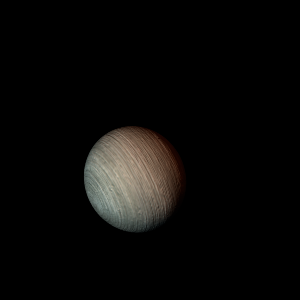|
|
Space Astro
|
Info for exoplanet "Wajo"
| Scientific (actual) data |
|---|
| Planet | KELT-15 b |
| Planet status | Confirmed |
| Planet mass | 0.92 |
| Mass sini | 0.91 |
| Radius | 1.443 |
| Orbital period | 3.32944 |
| Semi major axis | 0.04613 |
| Inclination | 79.67 |
| Discovered | 2015 |
| Updated | 2018-12-17 |
| Tzero tr | 2457090 |
| Tzero tr sec | 2457030 |
| Impact parameter | 0.2 |
| K | 110 |
| Publication | Published in a refereed paper |
| Detection type | Primary Transit |
| Mass detection type | Radial Velocity |
| Radius detection type | Primary Transit |
| Star name | KELT-15 |
| Right ascension | 117.42° |
| Declination | -52.12° |
| Mag v | 11.44 |
| Star distance | 201 |
| Star metallicity | 0.047 |
| Star mass | 1.181 |
| Star radius | 1.481 |
| Star temperature | 6003 |
| Wikipedia article | KELT-15 b |
Back
| |
| Fictional info (?) |
|---|
| Suggested name | Wajo |
| Planet type | Hot gas giant |
| It is the second-brightest natural object in the night sky after Wojai Togyo-rya, reaching an apparent magnitude of -5 - bright enough to cast shadows at night and, sometimes, visible to the naked eye in broad daylight.
It is named after the deity Wajo, the spirit of love and beauty.
Its orbital eccentricity is the largest of all known planets in its solar system; at perihelion, Wajo's distance from KELT-15 is only about two-thirds (or 63 pct) of its distance at aphelion.
Wind speeds can reach 153 metres per second. |
| Atmosphere | Ethane | 85% |
| Carbonyl sulfide | 14% |
| Atmospheric pressure | 28 bar |
 |
| Moon | Mikichu Paso | Medium-sized round oceanic planetoid |
| Google search for Wajo |
|
Website by Joachim Michaelis
|
|
|
|